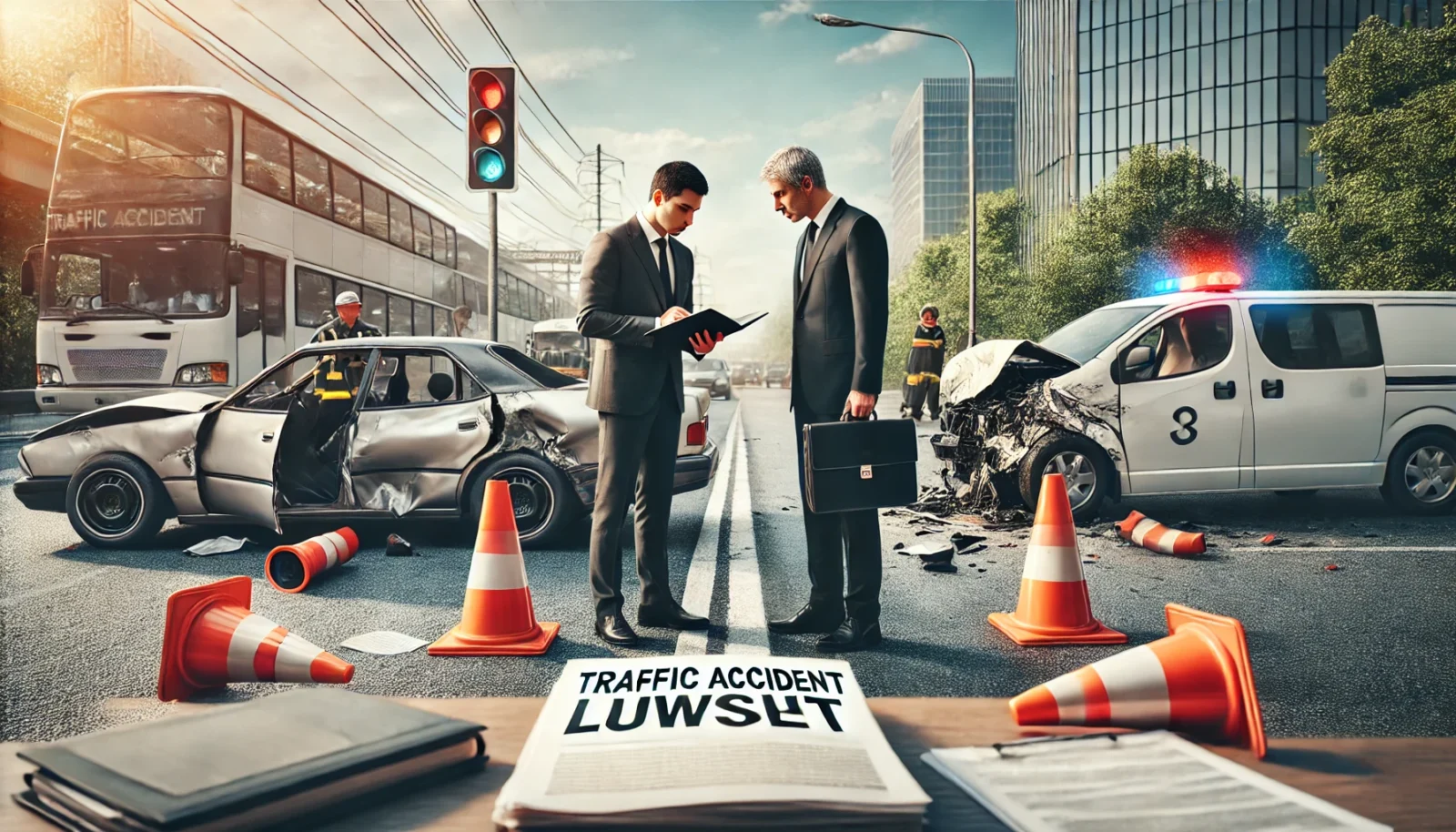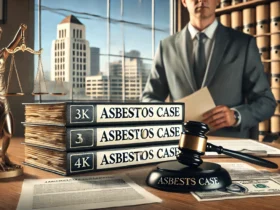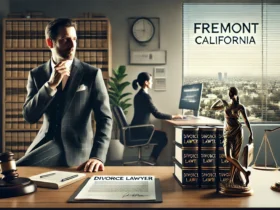What Is A Traffic Accident Lawsuit?
A traffic accident lawsuit is a legal case filed by a person injured or affected by a road accident. The goal is to get compensation for injuries, property damage, or emotional pain caused by the accident. A lawsuit comes into play when the other party involved in the accident is believed to be at fault. The injured person claims that the at-fault party acted recklessly or negligently, which led to the accident and the resulting harm. The court then examines the case and decides if the injured person deserves compensation.
Common causes of traffic accidents that lead to a traffic accident lawsuit include reckless driving, distracted driving, and drunk driving. Drivers who ignore traffic signals or speed limits cause many accidents. Weather conditions like heavy rain or fog also contribute to crashes. Sometimes, accidents happen because of vehicle problems, like brake failure or tire blowouts. Poorly maintained roads, like those with potholes or unclear signs, are another cause. In other cases, bicycle riders or pedestrians not following road safety rules lead to crashes. These causes often result in severe injuries, costly repairs, and long-term suffering, pushing victims to file a traffic accident lawsuit to seek justice.
When Should You File A Traffic Accident Lawsuit?
Filing a traffic accident lawsuit is important when the accident causes serious damage or injury. A lawsuit becomes necessary if you have major medical bills, lost wages, or lasting pain. If the other driver’s insurance company does not want to pay a fair amount, a lawsuit helps to recover the costs. Another reason to file a lawsuit is property damage. If your car has expensive repairs or is a total loss, and the insurance will not cover it, a legal case is an option.
Several factors determine if a traffic accident lawsuit makes sense. The severity of injuries is key. Minor cuts or bruises do not require a lawsuit. However, broken bones or surgery may lead to a case. If the accident causes expensive property damage, a lawsuit can help. When dealing with insurance disputes, a lawsuit is necessary if the company refuses to settle. Also, there is a time limit to file called the statute of limitations. This varies by state but usually ranges from one to three years. Filing within this time frame is crucial. Missing it may prevent any chance of getting compensation for your traffic accident lawsuit.
Types Of Traffic Accident Claims
A traffic accident lawsuit can include several types of claims, depending on the damages suffered. One common type is personal injury claims. These focus on compensation for medical bills, pain, lost income, and ongoing care. If the accident caused injuries that affected daily life or led to expensive treatments, a personal injury claim helps recover those costs.
Another type is property damage claims. These claims address the damage to vehicles or other property caused by the accident. The claim covers car repairs, replacing a totaled vehicle, or fixing any other items damaged in the crash. If insurance does not pay for the damage or the amount is too low, a lawsuit becomes an option.
In tragic cases, there are wrongful death claims. These are for families who lost a loved one in a traffic accident. A wrongful death claim seeks financial help for funeral expenses, loss of companionship, and other emotional suffering. It holds the responsible party accountable.
Different states have no-fault vs. at-fault claims. In no-fault states, insurance covers medical costs no matter who caused the accident. In at-fault states, the driver who caused the accident is responsible. These differences affect how a traffic accident lawsuit is handled.
Who Can Be Held Liable In A Traffic Accident Lawsuit
In a traffic accident lawsuit, several parties can be held liable. The most common are drivers. If a driver is distracted, speeding, or driving under the influence, they may be responsible. Their reckless actions can cause accidents, and a lawsuit helps the injured party get compensation.
Sometimes, pedestrians are liable. If a pedestrian ignores traffic signals, walks into traffic, or acts carelessly, they can cause an accident. If their actions lead to injuries or damage, they may face a traffic accident lawsuit.
Bicyclists are also considered. A cyclist riding recklessly or ignoring traffic laws can be held responsible. When their actions cause an accident, a lawsuit may hold them accountable.
Government entities may face lawsuits for poor road conditions. If roads have potholes, broken traffic lights, or unclear signs, and these issues cause an accident, the local government might be liable. The lawsuit seeks to address the dangerous conditions that led to harm.
Vehicle manufacturers are another group. If a car has defective brakes, airbag failures, or other issues, the manufacturer could be liable. The lawsuit aims to show that the defect caused the accident. Each case depends on who acted negligently and how it caused harm.
Steps To Take Immediately After A Traffic Accident
Taking the right steps after an accident is important, especially if you need to file a traffic accident lawsuit. First, focus on ensuring safety and calling for help. Move to a safe spot if possible and check for injuries. Call emergency services for medical and police assistance. Your safety and the safety of others is a priority.
Next, start documenting the scene and gathering evidence. Take photos of the accident, vehicle damage, and injuries. Capture road conditions, signs, and any factors that may have caused the crash. Get the names and contact details of witnesses. These details are useful for a traffic accident lawsuit if you need to prove fault.
Seeking medical attention is essential, even if you do not feel hurt. Some injuries appear later. A medical report links your injuries to the accident. It provides proof for any claims related to your lawsuit. Keep all medical records for your case.
Finally, focus on reporting the accident to the authorities. The police will write a report, which is often needed for insurance and legal purposes. This report helps document the incident officially, and it can be an important part of your traffic accident lawsuit if you decide to file one.
How To File A Traffic Accident Lawsuit
Filing a traffic accident lawsuit involves several important steps. The first step is consulting with a traffic accident attorney. An attorney helps you understand your rights and options. They evaluate your case, explain what to expect, and guide you through the process. An attorney is experienced in dealing with insurance companies and knows how to present your case effectively.
Next is collecting and organizing evidence. Strong evidence is key to proving your case. Gather police reports, photos of the accident, medical records, and witness statements. Keep all bills and receipts for expenses related to the accident. Your attorney uses this evidence to build a strong case and prove the other party’s negligence.
Understanding the legal process is also important. It involves filing a claim, which officially starts your lawsuit. The next step is negotiation. Your attorney works to reach a fair settlement with the at-fault party’s insurance company. If a settlement cannot be agreed upon, the case moves to litigation, which means going to court. In court, a judge or jury will decide the outcome of your case. Filing a traffic accident lawsuit can be complex, but with the right help and evidence, you can seek the compensation you deserve.
What Compensation Can You Receive In A Traffic Accident Lawsuit
A traffic accident lawsuit can help you get compensation for different types of losses. One type of compensation covers medical expenses. This includes current medical bills for treatment and any future medical costs you may have. If you need long-term care or physical therapy, this compensation helps cover those expenses.
You can also get paid for lost wages and loss of earning capacity. If the accident caused you to miss work or affected your ability to earn money in the future, you can receive money to make up for this loss. The amount depends on how much your injury impacts your ability to work.
Pain and suffering is another type of compensation. This is for the physical pain and emotional distress caused by the accident. The amount you receive depends on the severity of your injury and how it affects your daily life.
You may also be compensated for property damage. This covers the cost of repairing or replacing your vehicle or any other property damaged in the accident.
In some cases, the court awards punitive damages. These damages punish the at-fault party if their actions were reckless or involved gross negligence. A traffic accident lawsuit seeks to cover all these losses and make you whole again.
How Long Does A Traffic Accident Lawsuit Take
The length of a traffic accident lawsuit can vary. Several factors affect the timeline. The severity of injuries is one factor. If your injuries are serious and require long-term treatment, the case may take longer. The time needed to gather medical records and understand the impact of the injury on your life can delay the process. Another factor is the complexity of the case. If there are multiple parties involved or disputes over who is at fault, the lawsuit takes more time.
The cooperation of the insurance company also affects the timeline. Some companies are quick to settle, while others fight to pay as little as possible. If the case needs more evidence or if witnesses are hard to find, this can slow things down.
On average, a traffic accident lawsuit settles in a few months to a year. Settlement cases are usually faster, taking a few months if both parties agree. Court cases take longer, often over a year. Court cases involve more preparation, hearings, and possibly a trial. The time varies for each case, but your attorney works to resolve it as quickly as possible while getting fair compensation.
Common Defenses Used In Traffic Accident Lawsuits
In a traffic accident lawsuit, the at-fault party often uses common defenses to reduce or avoid paying compensation. One defense is comparative negligence. The person being sued argues that the victim was also partly responsible for the accident. If the court agrees, the compensation amount may be reduced based on the victim’s share of the blame. For example, if the victim is 30% at fault, the compensation could be lowered by 30%.
Another defense is claiming the victim was at fault. The at-fault party may argue that the victim’s actions directly caused the accident. They try to show that the victim ignored traffic laws, was speeding, or did not pay attention to the road. If this argument works, the victim may not receive any compensation.
The third defense is arguing over the severity of the injuries. The at-fault party claims that the victim’s injuries are not as bad as they say. They may argue that the victim had pre-existing conditions or is exaggerating the impact of the accident. Medical records and expert opinions become important in countering this defense. Each of these arguments aims to weaken the traffic accident lawsuit and lower the amount paid to the victim.
How To Choose The Right Traffic Accident Lawyer
Choosing the right lawyer for a traffic accident lawsuit is important. You should look for specific qualities in a lawyer. They need to be honest, dedicated, and have strong communication skills. A good lawyer explains things clearly, listens to your concerns, and keeps you informed. They should also be compassionate and show that they care about your well-being.
The importance of experience cannot be ignored. A lawyer with experience in handling traffic accident cases knows how to deal with insurance companies and navigate complex legal issues. They understand how to gather evidence, build a strong case, and get the best results. An experienced lawyer increases your chances of getting fair compensation for your injuries or property damage.
When meeting with a lawyer, ask questions during the consultation. Ask about their experience with traffic accident cases and their success rate. Find out if they have handled cases similar to yours. Ask how they plan to approach your case and what outcome they expect. Make sure to ask about their fees and how they get paid. Understanding how they work helps you decide if they are the right fit for your traffic accident lawsuit. The right lawyer makes a big difference in your case.
How Much Does It Cost To Hire A Traffic Accident Attorney
The cost of hiring an attorney for a traffic accident lawsuit depends on several factors. Most attorneys work on contingency fees, which means they only get paid if you win the case. This fee is usually a percentage of the compensation you receive. It can range from 25% to 40%, depending on the lawyer and the complexity of the case. If you win, the fee comes out of your settlement or court award. If you do not win, you usually do not have to pay the attorney for their work.
There are also additional costs and expenses to consider. These costs can include filing fees, court costs, and fees for expert witnesses. Other expenses may come from gathering evidence, like paying for medical records or accident reconstruction. Some lawyers cover these costs upfront and then deduct them from your settlement, while others may ask you to pay them as the case progresses. It is important to discuss these expenses with your lawyer before hiring them.
Understanding the cost structure helps you prepare for the financial aspect of your traffic accident lawsuit. Always ask your lawyer to explain their fees and any additional costs to avoid surprises later.
Faqs
Can You File A Lawsuit If You Were Partially At Fault?
Yes, you can file a traffic accident lawsuit even if you were partially at fault. The outcome depends on the state’s laws. Many states follow comparative negligence rules, which mean your compensation is reduced by your percentage of fault. For example, if you were 20% at fault, your compensation would decrease by 20%. However, if your fault exceeds a certain limit (often 50% or 51%), you may not be able to recover any compensation. Always check your state’s laws or ask your attorney for advice.
What If The Other Driver Is Uninsured?
If the other driver is uninsured, you still have options. You can use your uninsured motorist coverage, if available, to cover medical expenses and property damage. This type of insurance helps when the at-fault driver cannot pay. You may also be able to sue the uninsured driver personally, but collecting payment may be difficult if they do not have assets.
What Is The Average Settlement Amount For A Traffic Accident Lawsuit?
The average settlement amount varies based on the case details. Minor injury cases may settle for a few thousand dollars. Severe injury cases or cases with long-term effects can result in settlements of tens of thousands or even millions. The amount depends on medical bills, lost wages, and pain suffered.
To read more, visit our blog page. We do have more topics!










Got a Questions?
Find us on Socials or Contact us and we’ll get back to you as soon as possible.